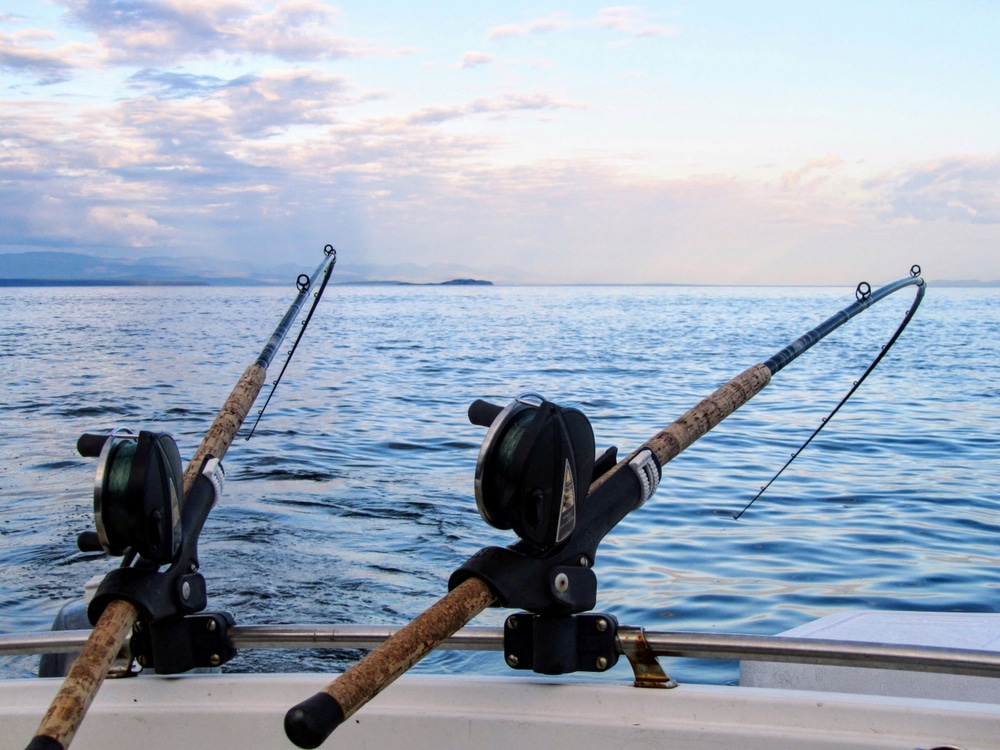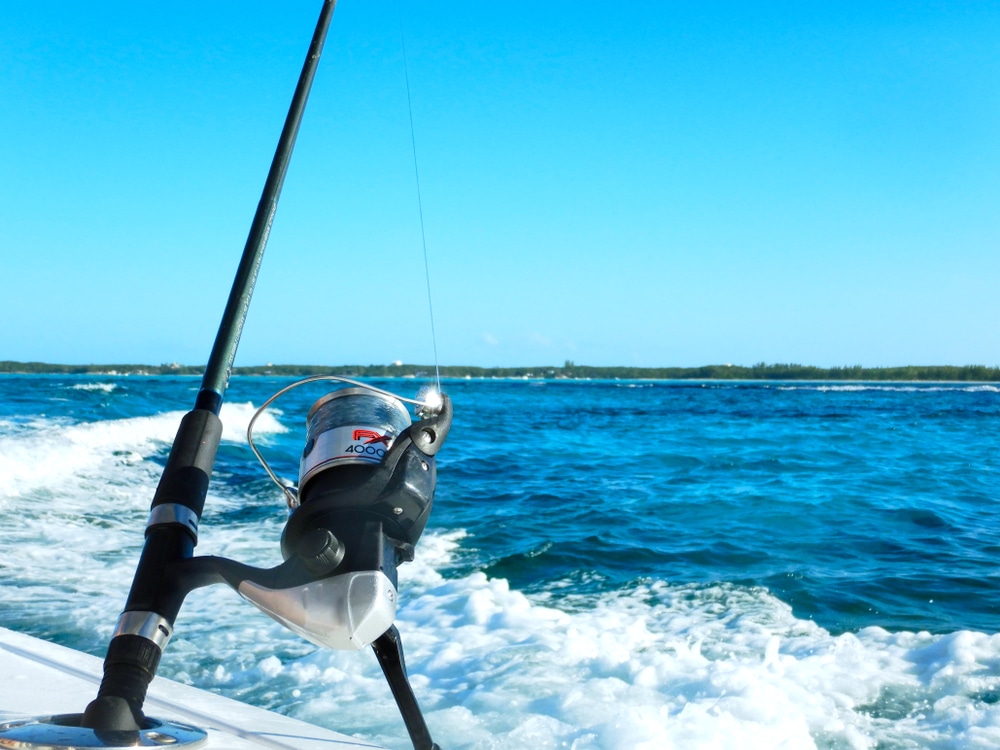Despite your best intentions, it isn’t always possible to have your hands on your fishing rod all the time while fishing.
You have to do other things like baiting the hook, steering the boat, or even eating snacks.
So, what if you leave your fishing rod unattended for a few minutes or loosen your grip over time? That shouldn’t be a crime.
However, most anglers know that the moment you leave your fishing rod unattended is when fish are most likely to take the bait.
So, fishing rod holders were made to avoid losing a catch or watching a fishing rod disappear into the water because it was left unattended.
A fishing rod holder is necessary, especially if you plan to fish off your boat.

Contents
Designs of rod holders
Fishing rod holders were first designed as rod holders with two parts. The first part was a pole-binding device.
It had a strap that you could place on a railing and use to secure the fishing pole. The second part of the rod holder was a Velcro strap.
One could tie this strap to an angler’s arms or legs.
They got into the way when the straps were on the waist, wedging into anything you hit. So, the first design of rod holders had to go.
The new design has four parts.
The four parts included two straps and two pole clips.
The short strap is wrapped around the forearm or wrist while the long strap goes around the leg or the ankle. But this all depends on your fishing position.

Importance of Rod Holders
The importance of fishing pole holders is often underestimated, and they are often overlooked.
However, they are helpful fishing tools. An angler having one or more fishing rod holders while fishing can make the difference between a great day at fishing or having another uneventful day.
For anglers, fishing rod holders are essential.
The rod holders act as their fishing assistants, albeit silent ones.
Arraying your rod holders strategically on your boat can keep you focused on finding and catching fish, eliminating some fishing frustrations.
A well-placed rod holder will help you catch more fish even when the fishing rod is left unattended.
Types of fishing rod holders
There are different types of rod holders to match different fishing scenarios.
Knowing how each rod holder is used is crucial to determine which one will suit you and your boat.
Fixed rod holders
These are mainly heavy-duty rod holders. They can be installed in holes found by the sides of boats or are screwed onto vertical surfaces like cabin sides.
Removable rod holders
They are mainly used on small vessels or vessels that cannot accommodate fixed mounted rod holders.
They can slide into any vertical surface on your boat and be easily installed or removed when not in use.
They are not as strong as fixed rod holders, but they provide versatile options for storing your fishing rods.
Flush-mounted rod holders
They are fixed holders installed in the gunwale of a boat.
Flush-mounted rod holders keep rods vertical or at an angle of 15 or 30 degrees and can be installed anywhere along the gunwale.
This provides anglers with a variety of options when setting up their boat.
Flush-mounted holders are made of high-quality steel, which makes them reliable and durable, and you can always trust that your rod will be in the same place you left it.
These rod holders are the most convenient and are solid enough to be used to catch bigger fish.
Swivel/Pivot rod holders
These mounts are excellent for going after bigger fish.
They permit the rod to rotate when side pressure is applied to the rod’s tip, thus reducing the risk of fraying the fishing line.
Clamp-on rod holders
Clamp-on mounts are the most versatile, as anglers can clamp them onto a horizontal rail or a vertical post.
They can be easily installed or removed and relocated.
They are great for going after smaller fish.
Adjustable rod holders
These rod holders rotate, tilt, and can be locked in place.
They are convenient and cost-efficient alternatives to fixed rod holders.
They may not be as sturdy or strong as fixed-mounted rod holders, but they are more versatile.
How to mount a fishing rod holder
Before installing your rod holder, you should know that the greater the angle of your rod holder, the more space you should have below the gunwale.
This means vertical rod holders (0 degrees) require the least space beneath the gunwale.
For a 15 or 30-degree unit, you should ensure enough space to accommodate it.
Follow these steps to install your fishing pole holder:
- Ensure the location has adequate access and space below the gunwale. You should be able to mount the holder easily and tighten the mounting hardware.
- Cover the intended location with masking or protective tape to prevent cutting or chipping while drilling
- Mark the center of the gunwale to ensure that the rod holder is in the middle, and use your drill to make a hole for the rod holder.
- Place the rod holder inside the hole to check the fit. Then mark the bolt holes and drill.
- Fit the rod holder into the hole to ensure it’s a perfect fit.
- After ensuring it’s an excellent fit, install the spacer and the backing nut that keeps the rod holder in place. Tighten them as hard as possible to ensure they are secure and remain in one place when agitated.
- Remove the masking tape and thoroughly clean the area with a clean rag.
Final Thoughts
Mounting your rod holder yourself is a straightforward process and it is pretty easy.
When choosing a rod holder, you should consider where you’re fishing and the kind of boat you’re using.
In theory, you can install your rod holder anywhere you choose on your boat.
However, studying your boat is important, as is figuring out where you’ll get the most productivity.
You want to drill your holes in areas that are accessible and free from obstructions.







